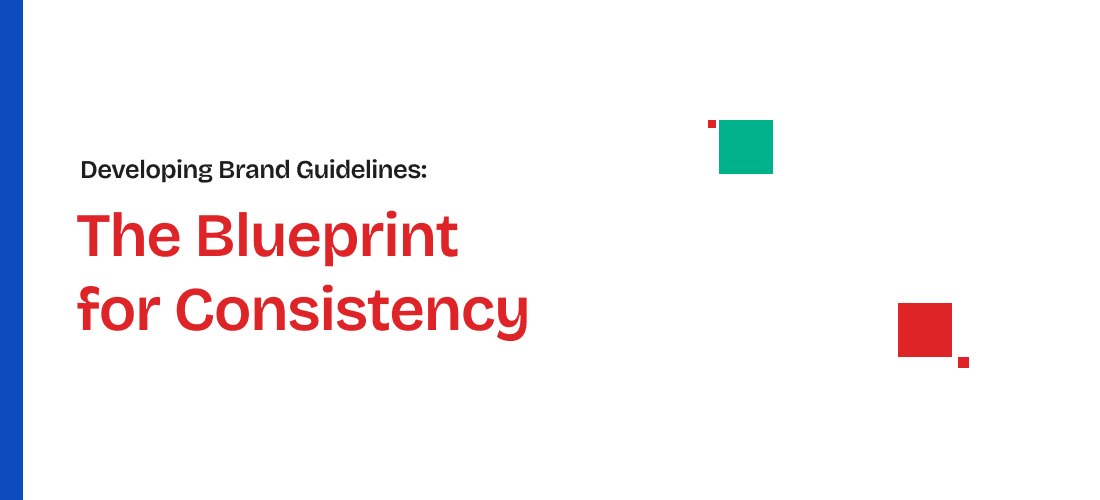
Nov 29, 2024

Why do we remember brands like Apple, Nike, and Starbucks? How do they stand apart from their competitors? And why do we associate each of these brands with a certain emotion? For Apple it is luxury with functionality; for Nike, it is achievement and energy and for Starbucks, it is quality and approachability. Each of these brands positions themselves based on their product and the audience they are targeting. They have achieved brand design success.
This is what brand design services should aim to create in each of their projects and campaigns. A well-defined brand design ensures that every interaction a brand has with its consumers is uniform and professional, creating a lasting impression. And all that begins with maintaining consistency throughout.
This blog will guide you through the essential steps to create a cohesive product branding design, helping you establish a strong and consistent brand presence.
We’ll explore the key steps involved in the process of creating a cohesive brand design, from understanding your brand identity and developing brand guidelines to applying and maintaining these guidelines across various platforms.
Before diving into the design elements, it’s crucial to have a clear understanding of your brand. This foundation will guide all your design decisions.

For product branding design, the logo and tagline are essential elements. A well-designed logo should be simple, memorable, and versatile, capable of representing your brand across various platforms and mediums. Your tagline, a concise and impactful phrase, should encapsulate your brand’s essence and convey your key message. Together, they create a strong foundation for your brand’s visual and verbal identity.
Colors play a significant role in brand perception and emotional response. Choose a color palette that reflects your brand’s personality and resonates with your target audience. Each color should serve a purpose and work harmoniously to create a cohesive look. Your primary colors should be complemented by secondary and tertiary colors to provide flexibility while maintaining consistency.
Typography is a crucial element of your brand’s visual identity. Select fonts that align with your brand voice and are readable across different formats. Typically, a brand will have primary fonts for headlines and secondary fonts for body text. Consistent use of typography helps create a unified look and feel, enhancing brand recognition and professionalism.
By establishing these core elements, brand design services lays the groundwork for a cohesive and recognizable brand identity.

Your visual style guide will define how your brand looks and feels. It ensures consistency across all your marketing materials. For a brand design agency, creating and adhering to a style guide is second nature, as the brand’s reputation lies with its visual style guide.
Brand imagery should reflect your brand personality and values. Consider the following:
Consistent layout and clean composition create a recognizable look and feel. Consider the following:
Icons can enhance your brand’s visual identity and improve usability. Consider the following:
By defining these elements, brand design services create a visual foundation that can strengthen your overall brand’s identity.

What imagery is to the visual style guide, so is style of messaging to the writing style guide of a brand. This defines how your brand communicates with its audience. A consistent writing style strengthens your brand’s personality and builds trust. When you employ brand design services, ensure that they develop a unique messaging and writing style that fits your brand.
Your brand voice is the personality of your brand expressed through words. It’s how you communicate with your audience. Consider the following:
Consistent grammar and style ensure professionalism and clarity. Consider the following:
Your tagline or slogan is a short, memorable phrase that encapsulates your brand’s essence. Consider the following:
A brand design agency will hold workshops and feedback sessions to determine the style, tone and messaging of your brand. These workshops will help build the strategy that will eventually lead to constructing your brand’s narrative.

Once a brand guideline is established for your brand’s foundation, it’s time to bring it to life across various platforms. The guideline will serve as a bible for any brand design company to ensure consistent application across mediums.
Your website, social media, and email marketing are the digital face of your brand.
Print materials, though less prevalent in the digital age, still hold significance.
Branded merchandise can extend your brand’s reach.
These are just a few examples of the collaterals where consistency is applied by brand design services. This serves as a reminder that wherever you brand is made visible to consumers and target audience, it should be presented with uniformity and professionalism.

When your brand maintains consistency across its style, messaging and imagery, it fosters loyalty and a sense of security among your target audience. No surprises isnt always a bad thing. Consumers love the idea of knowing that their favorit brand will never disappoint them. This is what consistency brings to the picture. And how can you ensure that your brand stays consistent? By adhering to the defined brand guidelines.
These brand guideline strategies can help maintain your brand identity with ease.
Also Read – The Basics of a Style Guide
Your Brand, Your Rules
Creating a cohesive brand design is a journey, not a destination. It requires dedication, consistency, and a deep understanding of your target audience. By following the steps outlined in this guide, you can build a strong brand identity that sets you apart from the competition.
Remember, your brand is a living entity that evolves over time. Regularly review and update your brand guidelines to ensure they align with your business goals.
A strong brand is a valuable asset that can drive customer loyalty, increase brand awareness, and, ultimately, boost your bottom line. So, invest the time and effort into choosing good brand design services that can help you represent your business visually and textually.